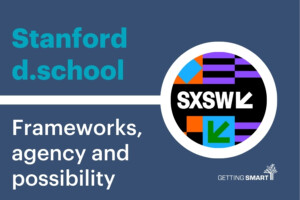How Not to Get Fired Implementing Next Gen Learning

As indicated by a recent RAND report, blended, personalized and competency-based learning holds the promise of significant achievement gains. With all the new tools being developed, the opportunity set gets better every month.
However, at this stage it’s still pretty complicated to implement next gen models. In fact, the work is challenging enough that it introduces new ways for principals and superintendents to get fired. At a recent New Hampshire summit, competency expert Rose Colby and I were in the group, “What are all the ways somebody could get fired for screwing up blended and competency-based learning?” That set off a firestorm of discussion–there was no lack of real and imagined examples.
- Imposing a new program or staffing model without discussion could lead to a staff revolt
- Slashing popular programs to buy laptops could lead to a parent revolt
- Firing teachers to buy laptops (or something that could be portrayed that way) is a sure loser
- Teacher or community resistance for buying equipment without a plan
- Screwing up a big technology system – spending a lot on a system that didn’t work
- Parent revolt on standards-based grading (e.g., Keep your 3, I want my A)
- Rearranging teacher furniture, assignments, or classrooms over the summer without a discussion (e.g., Who Moved My Desk?)
I mentioned my own struggles implementing a standards-based grading—it wasn’t the ideas as much as it was the logistical challenge of filling out and printing the 26 page report card that really ticked off the teachers.
These mistakes reflect bad decisions, poor implementation, and/or weak communication. They reflect the fact that next gen learning requires planning and follow through on three fronts:
- Organizational design: blended and competency-based learning are a team sport. It requires a much higher level of collaboration and often leverages a differentiated approach to staffing (see OpportunityCulture for examples)
- Technology design: an integrated information technology stack from student information system to student access device
- Community building: it’s always been a challenge to build support for public education but now EdLeaders need to build support a dynamic models and practices that may change every few years.
Failure to plan thoroughly or execute thoughtfully in any category could get you fired. There’s no need to flip the whole system at once. The Blended Learning Implementation Guide suggests:
- Identify and leverage teacher leaders
- Hold community conversations about the opportunity of personalized learning
- Put the vision on a timeline and work in 3-4 phases
- Craft temporary agreements about what will be different and better next year and focus on execution
- Encourage schools to plan and work in networks (feeder patterns or like minded schools, e.g. New Tech Network)
- Don’t get sloppy with purchasing (see Smart Series Guide To EdTech Procurement)
When it comes down to it, this is how to not get fired. But for the advancement of next gen schools, doesn’t it feel like it could be worth it?
For more on implementing next gen models, check out:



0 Comments
Leave a Comment
Your email address will not be published. All fields are required.